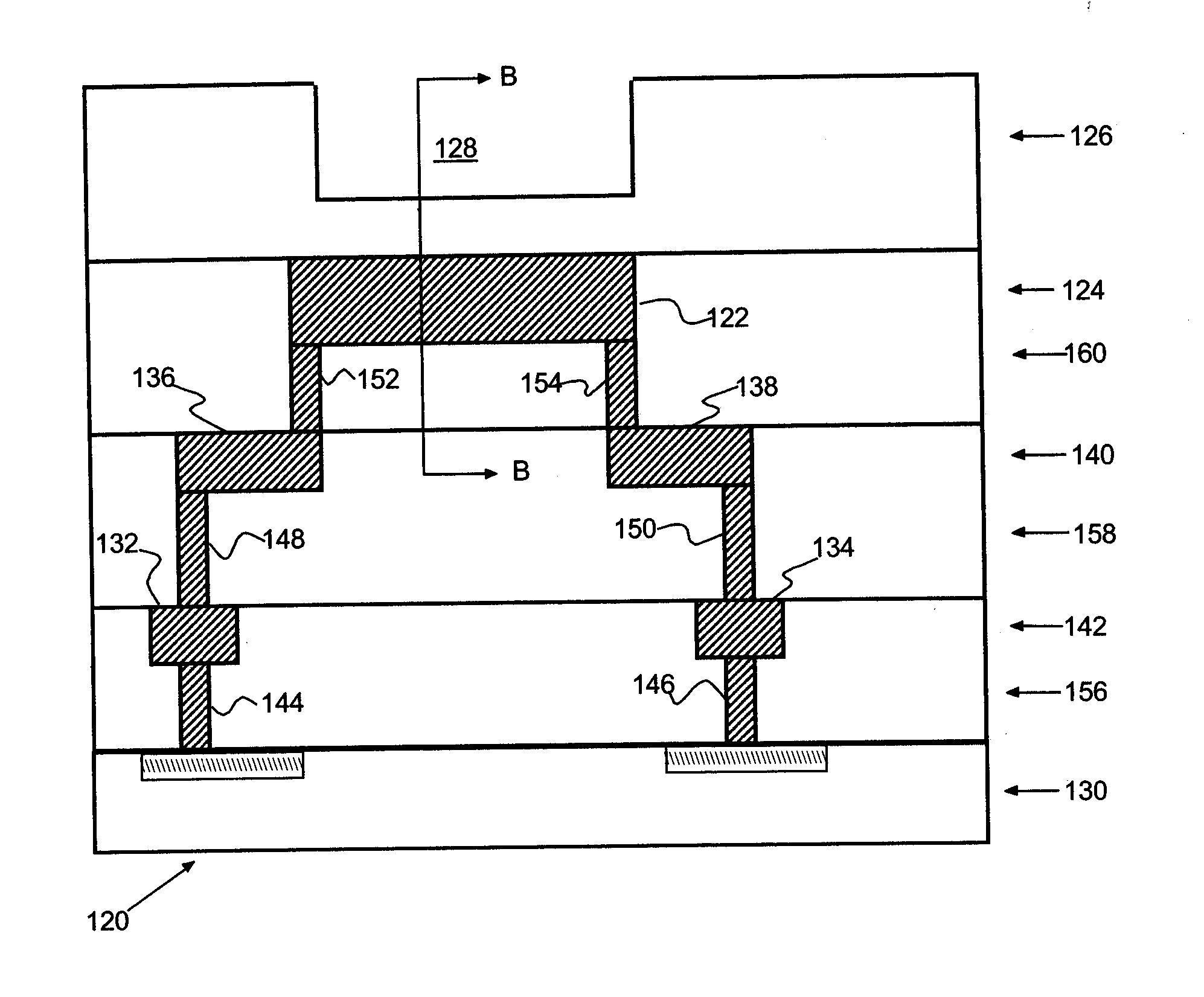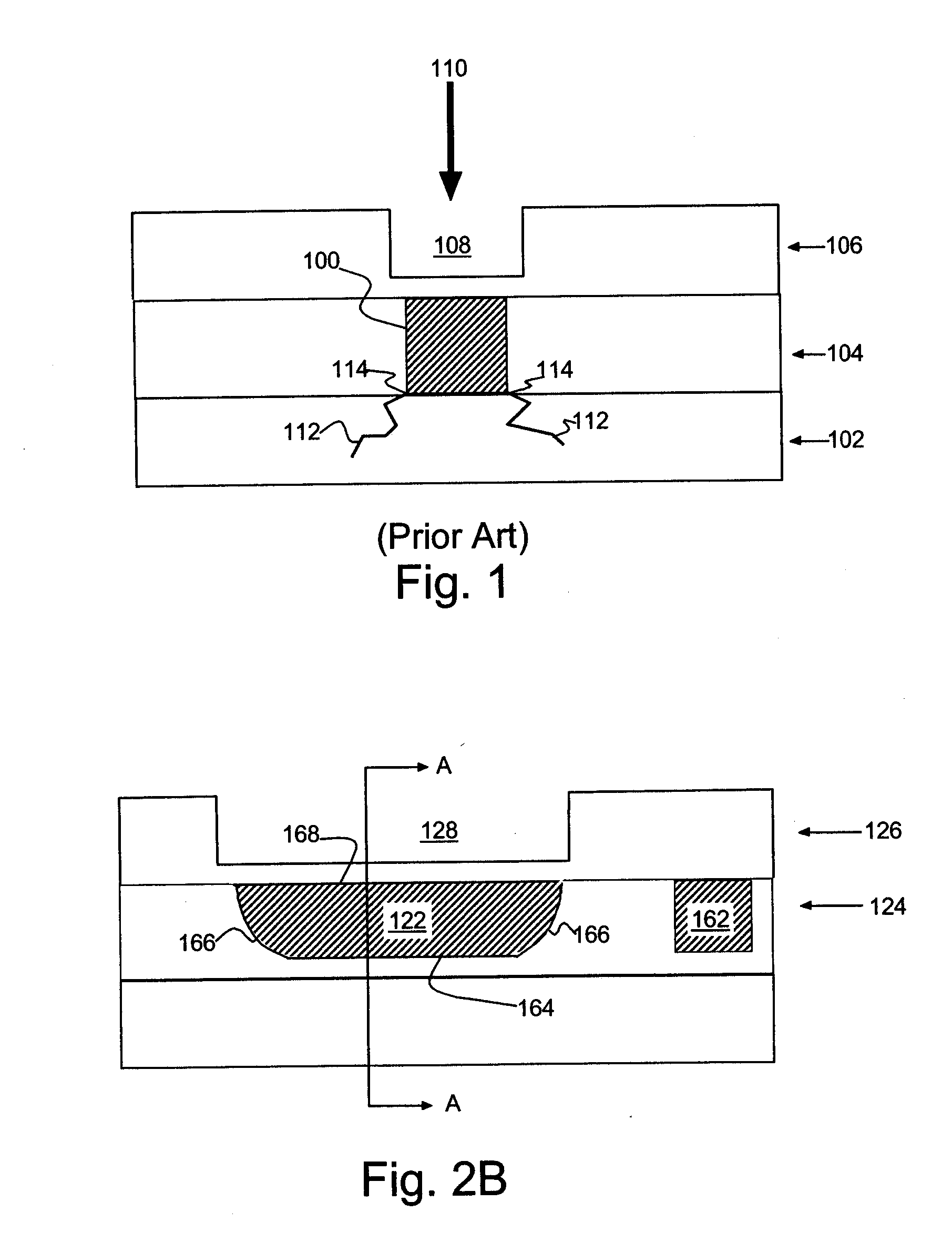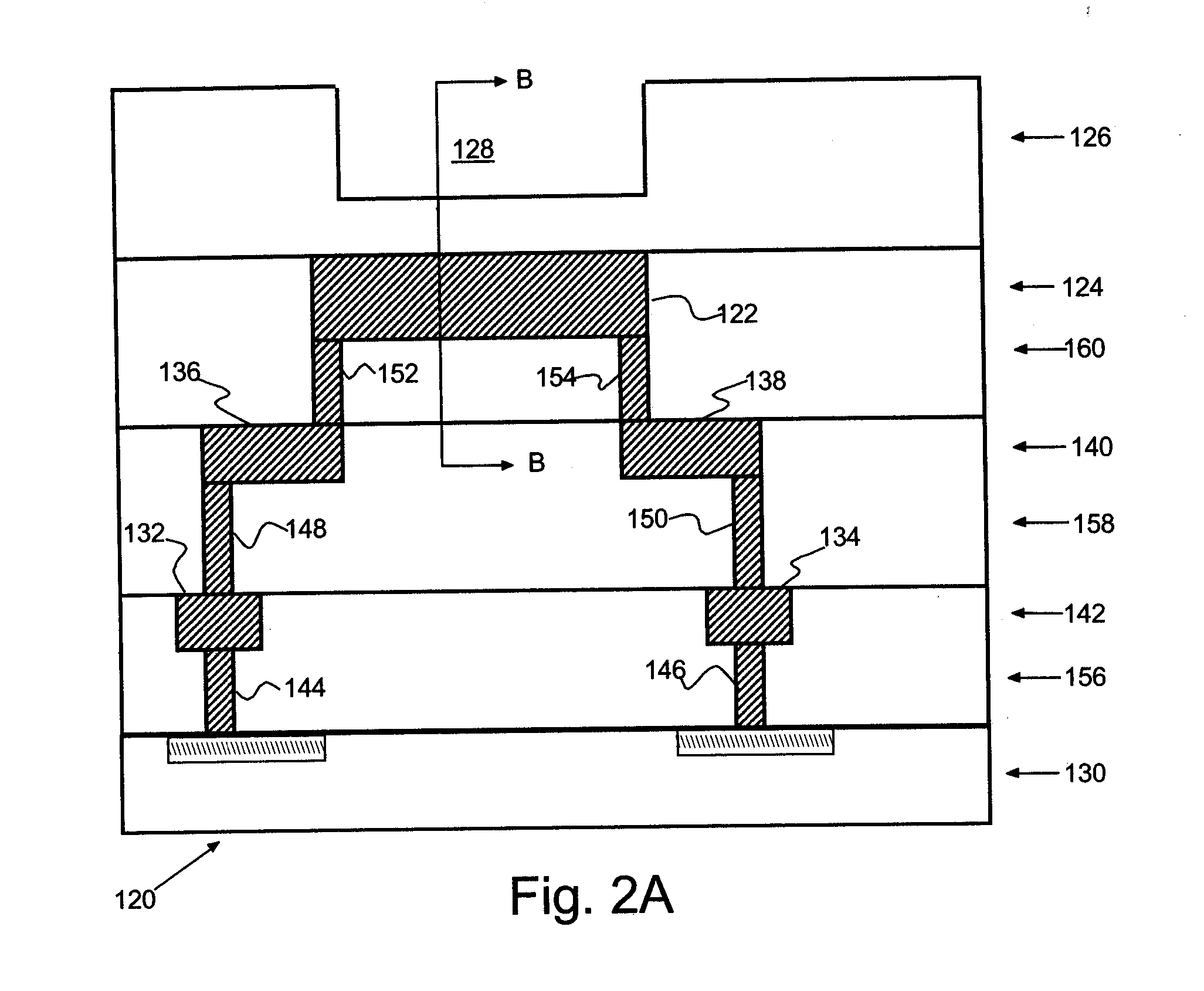Integrated circuit (IC) with on-chip programmable fuses
a programmable fuse and integrated circuit technology, applied in the field of forming fuses, can solve the problems of difficult control of window thickness, difficult to control the thickness of the window, and the entire array of chips may not be able to test well, so as to eliminate or reduce the damage of ic chips at programmed fuses and eliminate or reduce ic chip loss at fuse programming
- Summary
- Abstract
- Description
- Claims
- Application Information
AI Technical Summary
Benefits of technology
Problems solved by technology
Method used
Image
Examples
Embodiment Construction
[0019] Turning now to the drawings and, more particularly, FIG. 1 shows the effect on surrounding structures of blowing a prior art fuse 100 encased in a dielectric layers 102, 104 and passivation layer 106 (e.g., separating wiring or terminal metallurgy layers) with a thinned dielectric window 108 formed in dielectric layer 106 above the fuse 100. Low-k dielectric materials in the dielectric layers 102, 104 are softer and mechanically weaker than the typical material in the passivation layer 106. So, when energy (e.g., laser energy 110) is applied to the fuse 100, as the fuse material heats and expands some damage 112 is inflicted on the low-k dielectric layers 102, 104 at least until the material fractures the window 108 and escapes through the open window. The severity of the damage varies depending upon any number of factors, e.g., window thickness, fuse thickness and depth, energy source and level and etc. Because etching the passivation layer 106 is imprecise, it is very diffi...
PUM
 Login to View More
Login to View More Abstract
Description
Claims
Application Information
 Login to View More
Login to View More - R&D
- Intellectual Property
- Life Sciences
- Materials
- Tech Scout
- Unparalleled Data Quality
- Higher Quality Content
- 60% Fewer Hallucinations
Browse by: Latest US Patents, China's latest patents, Technical Efficacy Thesaurus, Application Domain, Technology Topic, Popular Technical Reports.
© 2025 PatSnap. All rights reserved.Legal|Privacy policy|Modern Slavery Act Transparency Statement|Sitemap|About US| Contact US: help@patsnap.com



